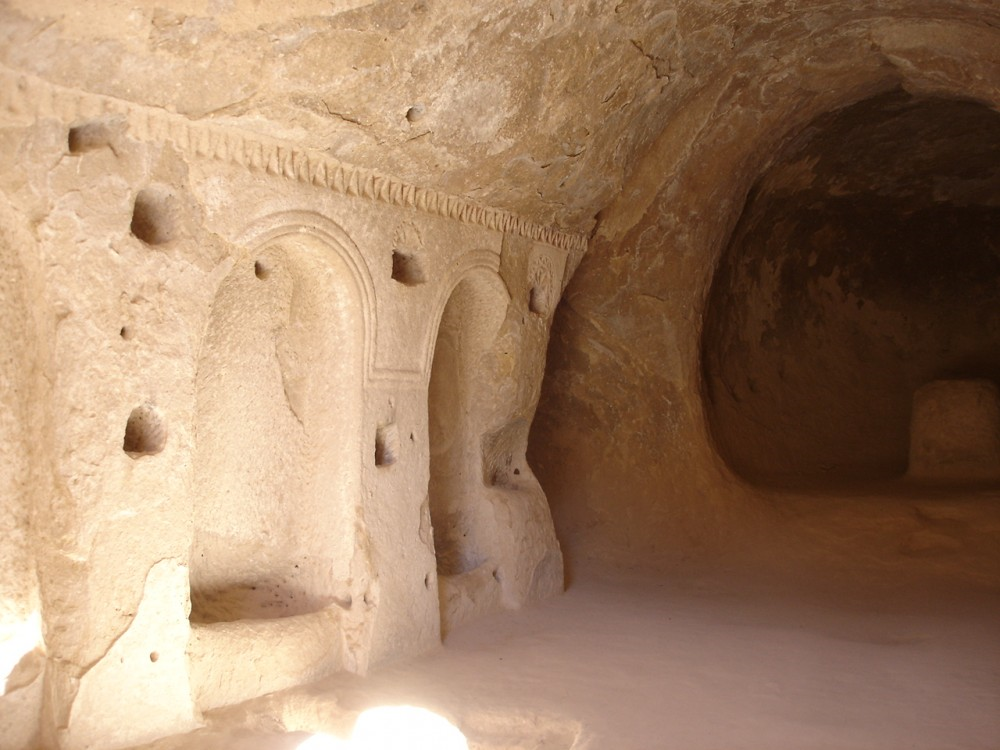2 Nov. Peter explains why believers have a living hope
"From Peter, an apostle of Christ Jesus.
To God's chosen people who are away from their homes and are scattered all around the countries of Pontus, Galatia, Cappadocia, Asia and Bithynia."
"God planned long ago to choose you by making you his holy people, which is the Spirit's work. God wanted you to obey him and to be made clean by the blood of the death of Jesus Christ.
Grace and peace be yours more and more."
"Praise be to the God and Father of our Lord Jesus Christ.
In God's great mercy he has caused us to be born again into a living hope, because Jesus Christ rose from the dead."
"Now we hope for the blessings God has for his children. These blessings, which cannot be destroyed or be spoiled or lose their beauty, are kept in heaven for you."
"God's power protects you through your faith until salvation is shown to you at the end of time. This makes you very happy, even though now for a short time different kinds of troubles may make you sad. These troubles come to prove that your faith is pure..."
"You have not seen Christ, but still you love him. You cannot see him now, but you believe in him. So you are filled with a joy that cannot be explained, a joy full of glory. And you are receiving the goal of your faith - the salvation of your souls."
"The prophets searched carefully and tried to learn about this salvation. They prophesied about the grace that was coming to you. The Spirit of Christ was in the prophets, telling in advance about the sufferings of Christ and about the glory that would follow those sufferings."
(1 Peter 1:1-11)

The First Letter of Peter was written by Simeon Barjonah (Simeon, son of Jonah – see Acts 15:14 & Matthew 16:17) – one of Jesus’s close group of twelve apostles – better known to us today by his Greek name, Simon, and his nickname, Peter (meaning ‘the Rock’).
The letter was written to encourage Jewish Christian believers who had been scattered across the northern part of Asia Minor (modern-day Turkey) after persecution by the Jews in Jerusalem following the outbreak of war in Judaea in 66AD. During this time of persecution, Peter encouraged them to hold onto the hope of eternal life that had been promised to them through the death and resurrection of Jesus Christ.
The letter was written by Peter shortly before his death in c.67AD. It was written after Peter had escaped from Jerusalem (probably around the outbreak of war in 66AD) and had arrived in Rome (which is referred to, in coded form, as Babylon – the city of adulterers and prostitutes – see 1 Peter 5:13, Revelation 14:8 & 17:5).
Peter sends greetings from John Mark (the author of Mark’s Gospel), whom we know stayed with Paul while he was under house arrest in Rome in 60-62AD (see Philemon 1:24) and probably joined him again after returning from Colossae in 66 or 67AD (see 2 Timothy 4:11 & Colossians 4:10).
It’s not certain who carried the letter to Asia Minor, but we know that Peter (whose knowledge of the Greek language was limited) was helped in writing this letter by Silas, one of Paul’s Greek-speaking fellow-workers from the church in Jerusalem (see 1 Peter 5:12). This explains how Simon Peter – an uneducated fisherman from Galilee (see Acts 4:13) who spoke Aramaic and Hebrew – could produce this letter in excellent literary Greek.
Peter begins his letter by sending greetings to the Jewish believers who have fled from persecution at the outbreak of war in 66AD to the Roman provinces of Pontus, Galatia, Cappadocia, Asia and Bithynia (in modern-day Turkey). This includes those in Ephesus, in Colossae and in the cities of Galatia that Paul had previously written to (see 2 Peter 3:15 & Ephesians 3:3).
Peter gives thanks to “the God and Father of our Lord Jesus Christ” (1 Peter 1:3) who has given the believers new life by raising Jesus from death. God fills them with “a living hope” (1 Peter 1:3) so believers can look forward to the rich blessings being kept for them, even though they are currently suffering the trials of persecution.
Peter refers to the prophets who spoke about the sufferings of Christ (see, for example, Isaiah 52:13-53, Zechariah 9:9-10 & 13:7) and his rising again to glory (see, for example, Psalm 22).
In response, Peter calls on the believers to live a holy life, free from evil desires. They should abandon the worthless life they used to live, and show a sincere love for their fellow-believers. (see 1 Peter 13-25)
The photo shows the Holy Cross Church - a cave church cut into the rock face at Zelve in Cappadocia - one of the areas where the Jewish Christian believers had escaped in Peter's day.
You can read more about Simon Peter, the author of the First Letter of Peter @ https://www.thebiblejourney.org/…/18-lette…/the-living-hope/
